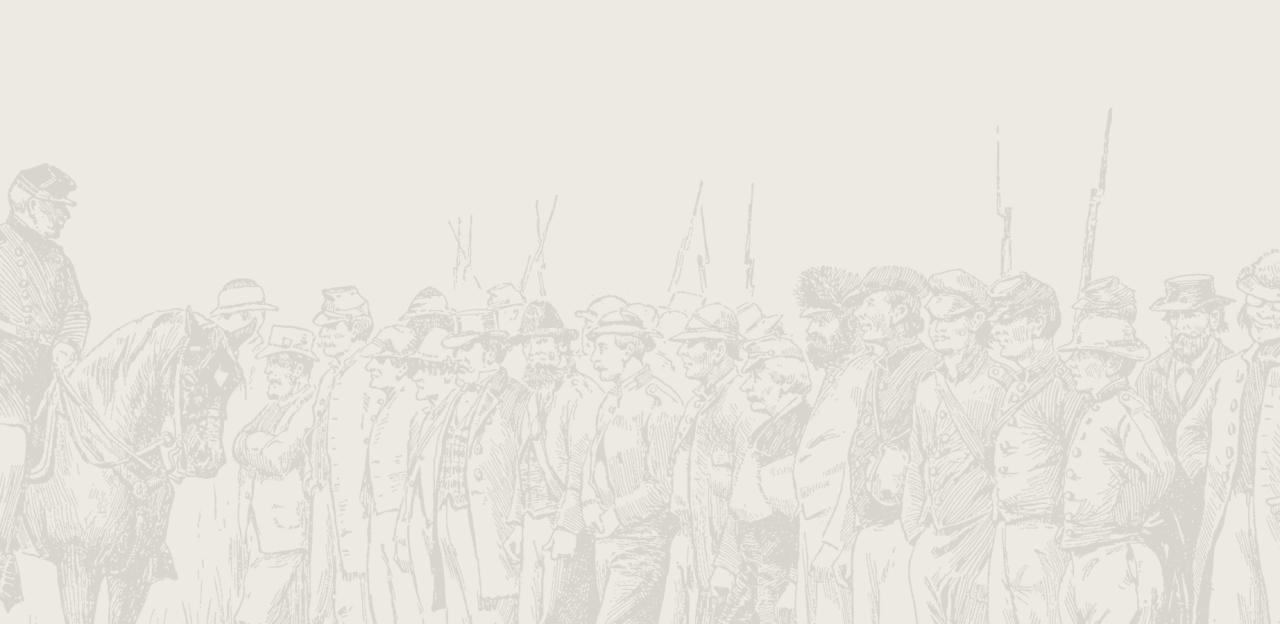Mobile Bay

The Battle of Mobile Bay
By the summer of 1864, the Union military and economic blockade of Confederate ports was beginning to have an effect. Mobile, Alabama, however, was one of only two major Confederate ports still open (the other being Wilmington, North Carolina), making the city a vital lifeline for supplies from the outside world. Its harbor’s formidable defenses prevented the U.S. Navy from closing the net completely, and a few rebel smugglers continued to slip in and out. That July, a Union combined Army-Navy force made plans to close Mobile Bay for good.
The bay had two main ship channels defended by three forts, the largest being Fort Morgan; a 46-gun, star-shaped fortification built in 1834 protecting the deepest channel from its eastern side. On the west side of the channel, on Dauphin Island, the smaller and newer Fort Gaines provided covering fire with 26 guns. Fort Powell guarded Grant’s Pass at the western entrance of Mobile Bay with 16 guns.
To supplement these defenses, the Confederates had blocked part of the main channel with torpedoes (floating wooden barrels of explosives like modern naval mines) and assembled a small flotilla consisting of the ironclad CSS Tennessee and three gunboats inside the bay. They were commanded by the veteran Admiral Franklin Buchanan, who had commanded the ironclad CSS Virginia at the Battle of Hampton Roads two years earlier.
Tasked with closing the port was Rear Admiral David G. Farragut, who had become the United States’ first admiral after his capture of New Orleans. Responsible for leading an army assault in conjunction with Farragut’s attack was Maj. Gen. Gordon Granger with about 1,500 men in three regiments of infantry and one of cavalry. Granger landed on Dauphin Island on August 3 and laid siege to Fort Gaines while Farragut assembled his fleet of four ironclad monitors and more than a dozen wooden ships. Early in the morning of August 5, 1864, the Federal fleet passed into the harbor.
Farragut split his ships into two parallel columns: the ironclads sailing nearest Fort Morgan and the wooden ships on the far side. Farragut ordered the larger wooden ships lashed together to a smaller ship so that the bigger vessels could serve as shields, and so the ships would be able to tow each other if one became crippled. Farragut personally observed much of the battle while lashed to the rigging of his flagship, the USS Hartford.
The ships steamed through the narrow width of the channel that had not been mined while passing under the guns of the fort. But, as the columns maneuvered, the ships found themselves drifting into the edge of the minefield. The ironclad USS Tecumseh struck a torpedo and sank almost instantly, and cautious Union captains began stopping their ships while still within range of Fort Morgan. At this juncture, Farragut is said to have ordered Hartford forward with the famous line "Damn the torpedoes! Full speed ahead!" (although more reliable accounts suggest a slight variation to this quote).
Although facing bombardment from the forts and the Confederate ships, Hartford made it through the minefield in one piece, with the rest of the fleet following in its wake. Once into the expansive bay, the fleet could easily move out of range of Fort Morgan’s guns, leaving only the Confederate ships to contend with. The Federals quickly captured or drove away the Rebel gunboats Selma, Gaines and Morgan, but despite the overwhelming odds the Tennessee, Buchanan’s flagship, moved forward to meet the Northerners.
Buchanan was soon surrounded by the Union ironclads as he steered for the Hartford, but the Tennessee’s armored plating protected her as she was rammed and pounded with shot. The ship’s weak engine – a product of the Confederacy’s limited industrial capacity – made her too slow to outmaneuver her adversaries and prevented her from successfully ramming any of the Union ships. The ships fought at close quarters; Tennessee slid alongside Hartford’s side at an arm’s length as their crews fired their guns at point-blank range.
Eventually, Tennessee’s slow engine, bad gunpowder, and fewer guns took their toll. Buchanan was injured and the ship’s rudder chains were shot away, preventing her from steering and allowing the Federals to pummel the ironclad in relative safety. Three hours after the fighting started the Tennessee surrendered, leaving the bay in Union control and closing the port to Southern blockade runners. The city of Mobile itself was too heavily defended to capture, but without resupply or reinforcements Fort Gaines surrendered on August 8 and Fort Morgan fell on August 23.
All told, the Union suffered over 300 casualties in the fighting compared to less than 50 for the Confederates, although when the forts surrendered some 1,500 Southerners were captured. The city of Mobile fell to a Union army expedition eight months later after the capture of Fort Blakely and Spanish Fort at the northern end of the bay. Farragut's victory at Mobile Bay was one of the badly needed Union victories in late 1864 that ensured President Abraham Lincoln's reelection in November.


